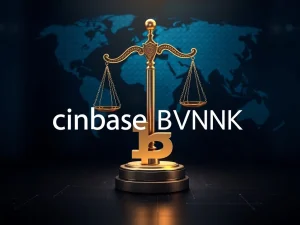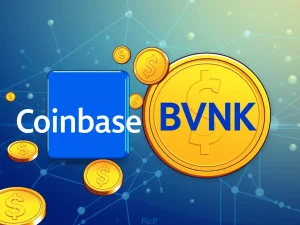Sonic Blockchain: A Revolutionary Upgrade for DeFi

The world of decentralized finance (DeFi) is constantly evolving, with new networks and protocols emerging to push the boundaries of speed, efficiency, and capability. One significant development grabbing attention is the transformation of the Fantom network into the new Sonic blockchain. This isn’t just a simple update; it’s a complete reinvention designed to tackle core issues that have limited performance in the past. But what exactly is Sonic, and what does this mean for the future of DeFi? Let’s explore the details of this exciting transition.
Why the Fantom Sonic Upgrade Happened
Fantom was an early innovator in using the directed acyclic graph (DAG) structure for distributed ledgers, known for quick transaction finality and low fees. However, it faced limitations primarily due to its reliance on the Ethereum Virtual Machine (EVM) and the Ethereum-derived account storage model. These elements led to challenges such as:
- Bloated data storage requirements for nodes.
- Slower execution times for complex smart contracts.
To overcome these bottlenecks and introduce significant improvements, the team decided to build Sonic as an entirely new, independent blockchain network. A recent report by HTX provides an in-depth look at the technology, tokenomics, and potential impact of this **Fantom Sonic upgrade**.
Deep Dive into the Sonic Blockchain Technology
The core of the **Sonic blockchain**’s performance improvements lies in its innovative technical architecture:
-
SonicVM Execution Engine: This proprietary engine is designed for speed. It translates EVM bytecode into a faster internal format. It also optimizes computations to avoid repetitive work and pre-analyzes contract code for efficiency. Crucially, the **SonicVM engine** maintains full compatibility with the EVM, meaning smart contracts built for Fantom can run seamlessly on Sonic.
-
SonicDB Database Design: To address the storage and synchronization issues common in older blockchain architectures, Sonic introduces SonicDB. This new design separates the blockchain state into two distinct databases:
- LiveDB: Optimized for fast access to the current state and execution data.
- ArchiveDB: Stores the full historical data.
This separation drastically reduces the data storage requirements for consensus nodes (by up to 90%), leading to lower hardware costs and faster node synchronization times.
Understanding the S Token Crypto
The new Sonic mainnet will operate using a new native asset called S. Holders of the legacy FTM token will be able to convert their tokens to S at a 1:1 ratio via an official portal. The **S token crypto** has a specific tokenomics model:
- It will be non-inflationary for the first six months after the mainnet launch (expected December 2024).
- After this initial period, 6% of the initial supply will be minted to reward early users of the network.
Beyond user incentives, Sonic also includes a mechanism to reward developers through its Gas Fee Monetization (FeeM) system. Up to 90% of transaction fees generated by participating applications are directed back to the developers, with the remaining portion going to validators. This creates a strong incentive for developers to build and deploy applications on Sonic.
Fueling DeFi Innovation on Sonic
A major focus for Sonic is becoming a hub for **DeFi innovation**. Andre Cronje, a key figure behind Fantom and the creator of Yearn.finance, is actively involved in leading DeFi development on the network. A notable project is Flying Tulip, a new DeFi platform combining trading, liquidity pools, and lending functionalities.
Flying Tulip is built on a concept similar to Curve v2’s dynamic bonding curve, where the automated market maker (AMM) adjusts its curve based on external price feeds from oracles. This mechanism automatically concentrates liquidity around the current market price, simplifying liquidity management for users and improving capital efficiency. Flying Tulip aims to enhance this concept further with faster curve updates, narrower trading ranges, and a novel dynamic loan-to-value model for lending. These innovations aim to make trading and lending more efficient and less prone to impermanent loss.
Conclusion: Sonic’s Potential Impact
The emergence of the **Sonic blockchain** represents a significant step forward from its Fantom origins. By addressing fundamental technical limitations related to execution speed and data storage, Sonic is positioning itself as a high-performance network built for the demands of modern decentralized applications, particularly in the DeFi space. With a focus on developer incentives, innovative DeFi protocols like Flying Tulip, and a new native token, Sonic aims to attract users and builders seeking a faster, more efficient, and capital-efficient blockchain experience. Its success will depend on the adoption of its technology and the growth of its ecosystem, but the foundation laid by the **Fantom Sonic upgrade** appears promising for future **DeFi innovation**.







